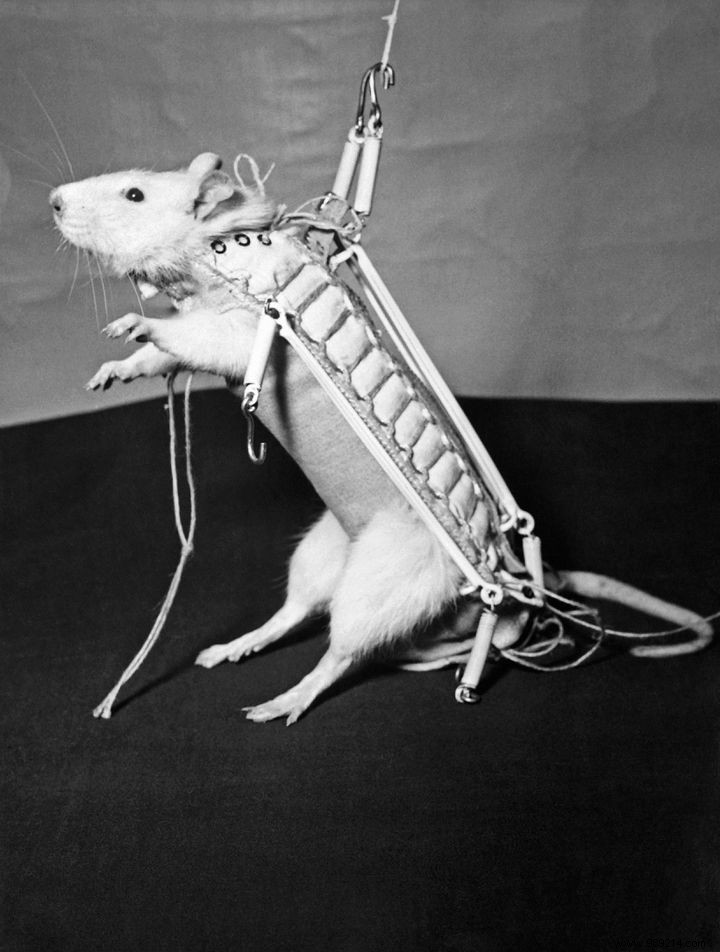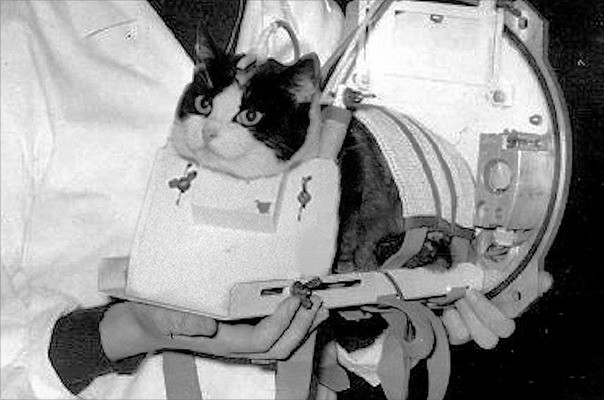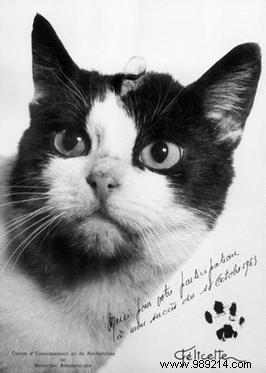We sent a lot of sometimes unusual objects, but also some living beings in space. Before succeeding in placing a human in orbit, however, it was necessary to train and test the technologies upstream. As often with science, when the result involves the life of a man, we first study the impact on animals. So, before Yuri Gagarin, the USSR launched the dog Laika among the stars. On the United States side, these are monkeys that have been installed on top of large rockets. But what about France? You probably don't know it, but France has become the pioneer in feline space exploration by sending the first cat into space. Her name was Félicette and we tell you her story which unfortunately has nothing to envy to other laboratory animals!
By launching the rat Hector out of the atmosphere on February 22, 1961, France became the third nation to successfully send an animal into space (after the USSR and the United States). Moreover, unlike the Soviets and the Americans, the French space program only named some of its four-legged astronauts. Indeed, a scientist should not take a liking to a ball of fur. After all, it remained above all a subject of study. Like Hector, we baptized animals that managed to come back alive to present them to the public.

The Medical Education and Research Center aeronautics (CERMA) was in charge of Hector's space mission. However, he had bigger ambitions and wanted to send a larger mammal in order to obtain more convincing results. Their choice then fell on cats , because French scientists had access to numerous neurological observations on this species. They more particularly opted for cats, the latter being indeed of a calmer temperament than their male counterparts.
For this perilous mission, CERMA acquired fourteen cats. Then, the staff of the French space program trained them for two months like real astronauts. The felines, for example, were placed in a centrifuge, found themselves bombarded with deafening noises and were used to being confined in very small spaces. The scientists also installed electrodes in the poor animals' bodies, particularly in their brains. A cat did not tolerate this surgery well, which led to her being withdrawn from the program. She then became the team's mascot before a researcher adopted her. She even had the right to a nickname:Scoubidou.
This is a chance that the cat registered C 341 did not enjoy. Indeed, it was she who was chosen for the launch scheduled for October 18, 1963. On D-Day, CERMA personnel installed sensors on her body. Her hind legs received several of them in order to make her react through electrical impulses. At 8:09 a.m., after the countdown, the Véronique rocket rose above the Algerian desert, still under colonial control. At breakneck speed, the cat is torn from the atmosphere. The cockpit then reached the maximum altitude of 152 kilometers, when the animal evolved in weightlessness for five minutes. The time to come back down to the blue planet then came. The landing went well and C 341 emerged unscathed (at least physically). The flight lasted only a quarter of an hour.

During the mission, the French scientists noticed the comatose state in which the cat was plunged when it was no longer subject to gravity. The lack of sensory cues would explain this behavior observed in space only in a feline. Either way, C 341's mission was successful. In order to make France proud, the first space cat needed a name. Fashionable at the time, the famous cat Félix provided the inspiration:C 341 thus became Félicette . His feat is then publicized in newspapers or documentaries for example.

However, the pussy quickly fell into the oversight. In a context of increasing power of animal protection organizations, it became important to remain discreet, especially for the rest of the operations... Indeed, after three months of observations, scientists euthanized Félicette in all discretion. What do you want ? It was necessary to recover the electrode which protruded from his head... To celebrate his sacrifice, postal services produced stamps. On most of them, however, the cat was named Félix, probably because of a rumor:before the launch of Félicette, a tom would have escaped from the French space program. However, this story does not add up, because CERMA only selected females and did not name them.
Unlike Laïka, with whom she shares her destiny as a laboratory guinea pig sacrificed in the context of the Cold War, Félicette waited for recognition for many years. At the end of 2020, a statue in his likeness was nevertheless finally erected in France. However, the initiative to celebrate the first space cat did not come from the public authorities and even less from France. We owe its funding to a Kickstarter campaign launched by an Englishman, undoubtedly more sensitive to the animal cause than the French space program of the time.